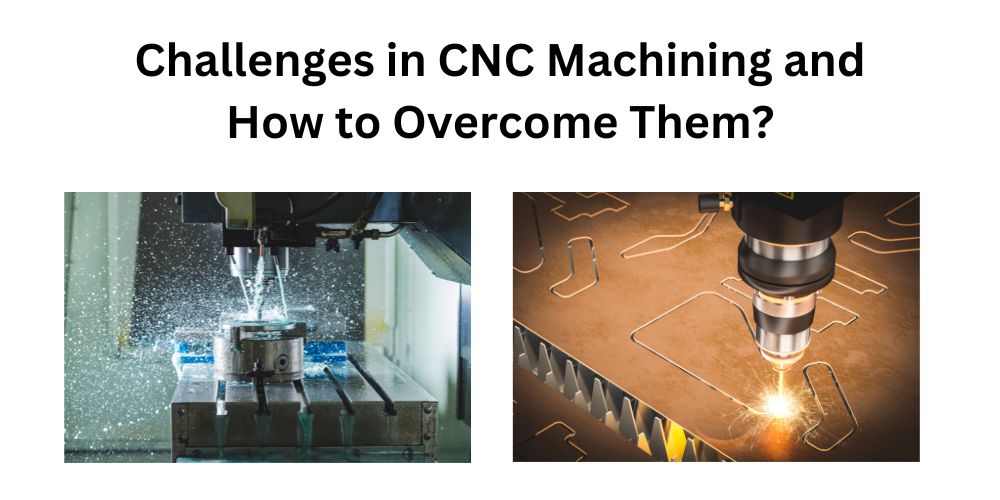
Computer Numerber Control (CNC) machining has revolutionized the manufacturing processes by offering unparalleled precision and efficiency. CNC machining has become an integral part of modern manufacturing as it allows production of complex parts and components with high precision.
Although there are numerous benefits of this advanced technology, CNC machining also faces several challenges that can affect the productivity and the quality of product. This article delves into those challenges and how reliable companies overcome these challenges and produce optimal CNC machined components.
Common Issues with CNC Machines and How to Fix Them?
Let’s first understand the common challenges and then what are the solutions to each of these problems.
1. Errors in Codes
One of the most prevalent and common issue faced by every manufacturing company is errors in the programming codes of CNC machining. These errors can lead to several productivity issues like inaccurate cuts, wastage of materials, and damage in equipment.
Solution:
Regular Code Reviews: When there is a thorough code review regularly, the chances or error reduces and hence, doesn’t affect the productivity.
Simulation Software: Testing the code on a simulation software before running it on the live machine reduces the chances of costly mistakes.
Training: While coding and programming is difficult, continuous training for operators and programmers on the latest version of coding practices and software updates, aids in minimizing minor to major errors.
2. Cost of Equipment and Software
The cost of CNC machines is generally very high and hence it is associated as a software that can be a significant barrier in growth specifically for small and medium-sized enterprises.
Solution:
Leasing Options: While the CNC machine is costly on purchase, you can consider the leasing option which can outright or reduce your initial costs.
Used Equipment: Purchasing of a new machine can be costly but the used one can be cost-effective and yet will provide high-quality results. This will impact your productivity positively.
Open-Source Software: Using an open-source CNC software can aid in reducing the software costs without compromising on other essential features of the machine.
3. Poor Maintenance
Often maintaining a machine can become a challenge for manufacturing companies which may lead to machine breakdowns, increased downtime, and reduced efficiency.
Solution:
Scheduled Maintenance: You must implement a strict schedule for maintenance of the machinery while ensuring the all the parts of the machine are regularly inspected and are well-serviced.
Maintenance Training: All the operators and maintenance staff in your organization should be well-trained on how to maintain this expensive CNC machine and its parts.
Use of Monitoring Systems: While you invest on the machinery, you must also consider investing in advanced monitoring systems that can help in detecting issues early which eventually helps in preventing any major breakdowns later.
4. The Necessity for Skilled Labor
Operating a CNC machine requires highly skilled labor to program and effectively run the machines. The shortage of skilled labor in your organization can be a major challenge.
Solution:
Training Programs: While you introduce CNC machine to your manufacturing process, you must also establish a comprehensive training program to develop the necessary skill in the operators who will handle the machine.
Apprenticeships: You can partner with some local technical schools and colleges to create an apprenticeship program where people will be trained to become skilled to work on the machine.
Continuous Education: Since machines are continuously evolving, you must encourage your operators with continuous education and certifications to keep up with the latest advancements.
5. Incorrect Settings Selection
While you might do everything right and train your staff well, there is a possibility that you have selected incorrect settings in your machine related to the speed, feed rate, and tooling which can result in poor quality parts and increased wear on the machine.
Solution:
Standard Operating Procedures (SOPs): When you develop SOPs for each process, there is consistency and accuracy that comes along which will lower the chances of any errors.
Regular Calibration: Calibrating the machines regularly will aid in maintaining the accuracy in setting and in productivity.
Use of Automated Systems: When you use automated systems that can suggest or adjust the settings based on the material and the part requirements, the chances of errors reduces and productivity increases.
Conclusion
Although CNC machining offers numerous benefits in manufacturing process, it also presents several challenges which might lead to impact on efficiency and your product quality. When the above major issues are well-managed, you will be able to ensure consistence in production of high-quality CNC machined parts.







